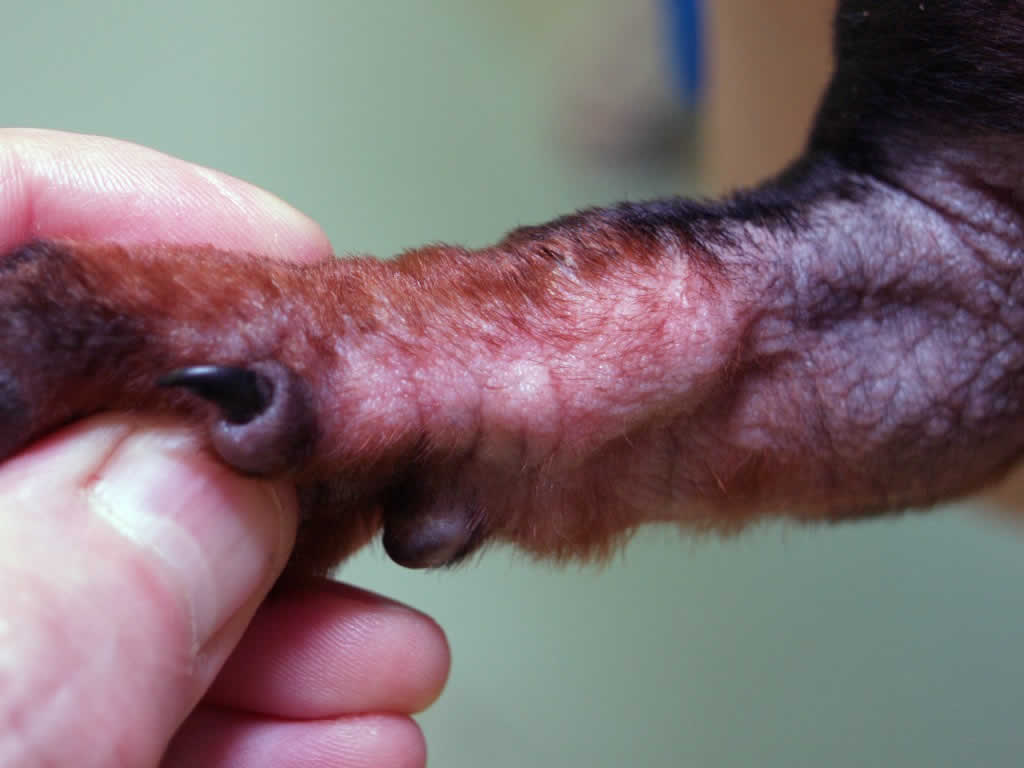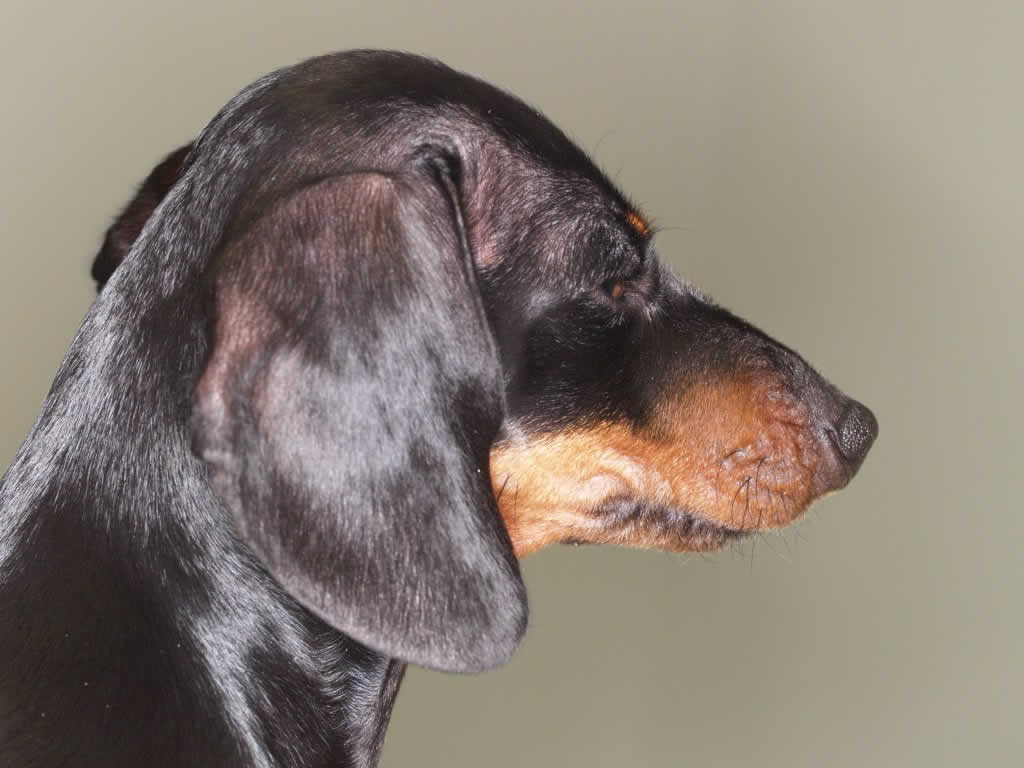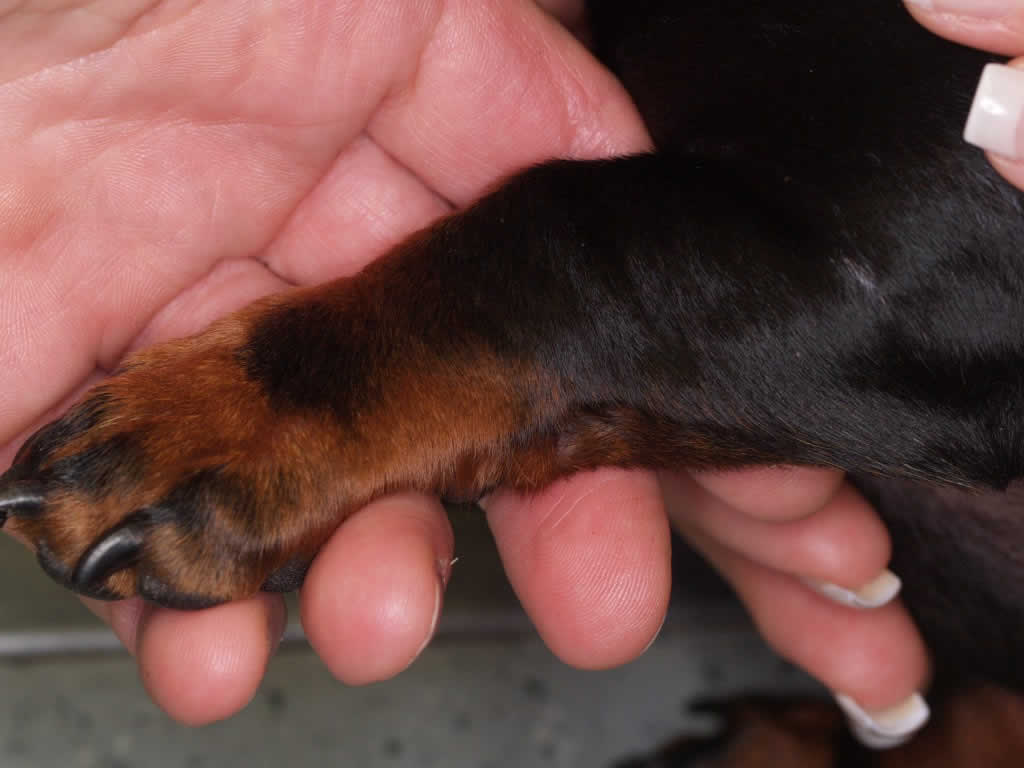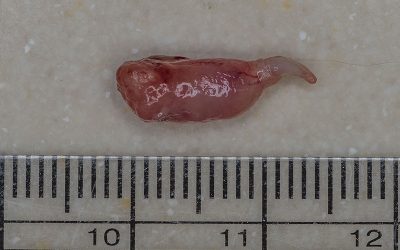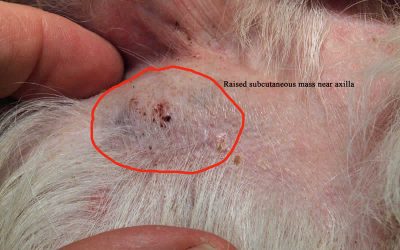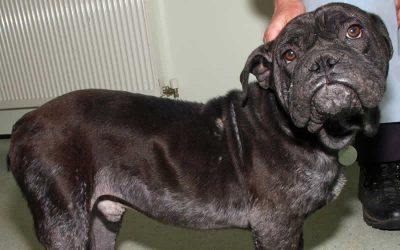We recently saw a rare case of Primary Malassezia (Yeast) Dermatitis in a young Dachshund. We often see this yeast causing infections as a secondary infection in cases of allergy but this case appeared to be a primary infection which is rare and mostly reported in Westies and Bassett Hounds.
Matilda was presented with a 4 week history of hair loss and mild scaling on the head, ears, underside of neck and on the limbs. She was also suffering with a waxy otitis. No scratching or chewing had been observed. The differential diagnosis included demodectic mange, dermatophytosis (ringworm) and allergy.
Skin scrapings and sellotape impressions from the skin surface were examined microscopically and samples were taken for fungal culture.
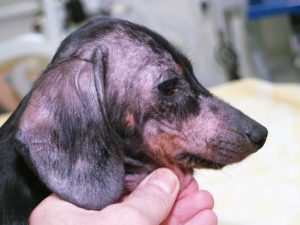
Primary Malassezia Dermatitis – Hair loss and inflammation with mild scaling on head and ears
No mites were found, but large numbers of Malassezia organisms were seem on the sellotape impressions. Microscopic examination of ear discharge revealed large numbers of Malassezia organisms. Fungal culture was negative for ringworm. Skin biopsies were taken from several sites under local anaesthetic and submited to a dermatohistopatholgist.
Histopathology was not diagnostic of any one condition, but was suggestive of allergy or parasites. A blood test for sarcoptic mange antibodies was negative.
Treatment was re-started with Itraconazole and Chlorhexidine shampoo and this rapidly reversed the relapse.
Once again and attempt at stopping treatment was made, only to see another relapse. Topical antifungal dips using enilconazole were tried initially twice weekly then once weekly. This was found not to be as effective as Itraconazole orally.
It was decided to try Itraconazole pulse therapy. Various protocols exist and are all based on the fact that the drug is metabolised slowly and need not always ahave to be given daily. Pulse therapy with treatment for two consecutive days a week has maintained remission in this case.
Primary Malassezia dermatitis is a rare condition. It is not fully understood why an overgrowth of this yeast occurs in these cases. Secondary infection with this yeast is much more common and often seen in the axillae and feet of dogs suffering with allergic dermatitis. These dogs are often very pruritic (itchy) scratching there undersides and licking their feet. Despite the inflamed appearance of and secondary changes in the skin, no pruritus has ever been observed in this case!

Nasopharyngeal Polyps in Cats
Ear disease isn't that common in cats. Apart from infestation with ear mites (otodectes) which in my practice is most commonly seen in newly purchased kittens, otits externa, which is often seen in dogs, is only seen occasionally. Very often , when I am referred a...
2 Cases of Mast Cell Tumours
These growths are very common on dogs and are called the “great imitator” as they can look very much like other skin ….
Demodicosis
I regularly see dogs suffering with various presentations of demodicosis, a skin condition caused by….

